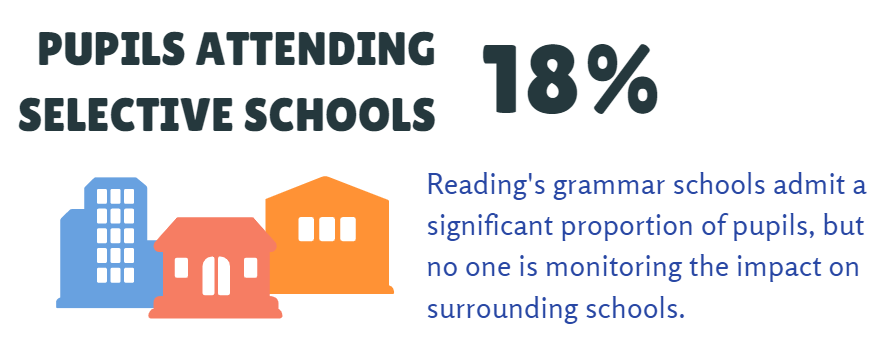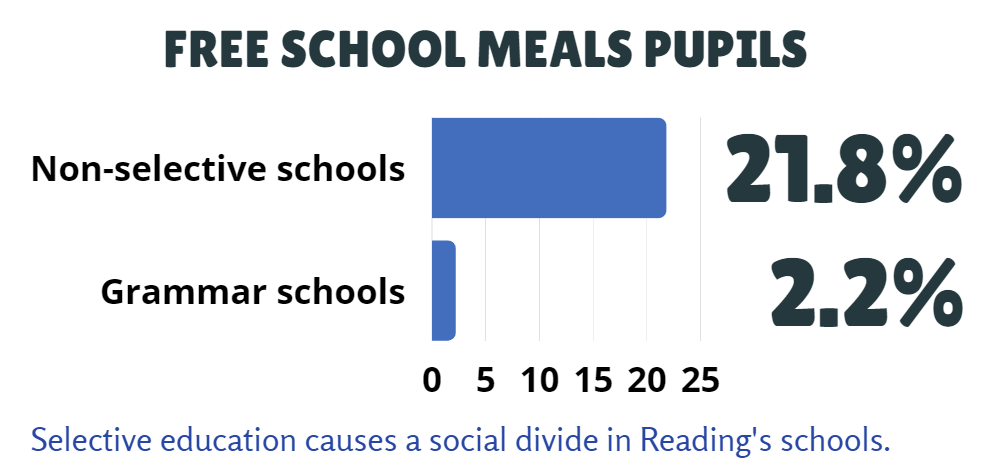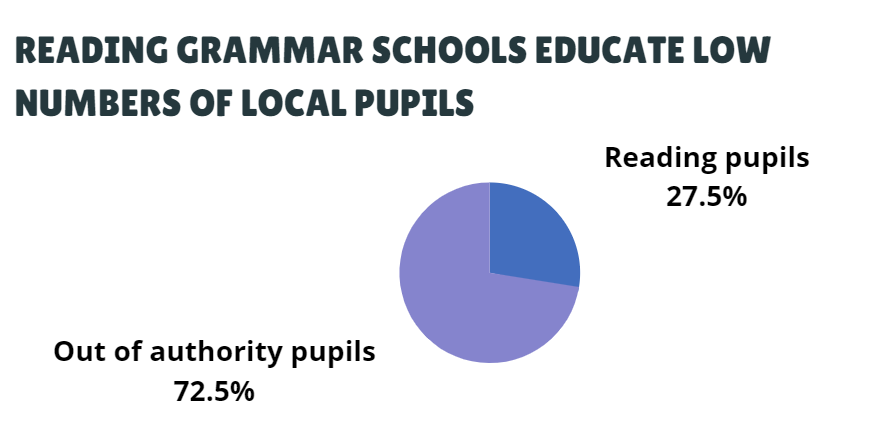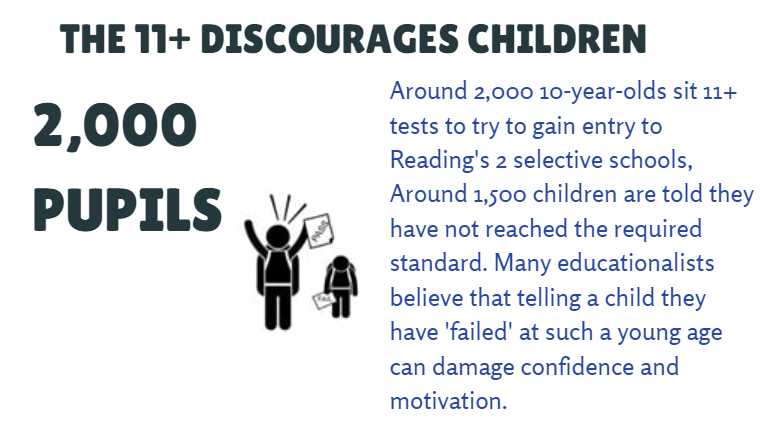 Selective education guide – Reading
Selective education guide – Reading
BACKGROUND
There are two grammar schools in Reading, both are ‘super selective’ using the highest scores in an 11-plus to select their pupils, many of whom travel some distance to reach the school.
Check out our map of selective schools in England to find out more about these schools. The map gives the percentage of disadvantaged pupils, the percentage of pupils attending a grammar school who are likely to have come from a fee-paying ‘prep’ school, and the relative selectivity of every grammar school in Reading. View the map HERE.
Or, to read stories from parents and teachers experiencing selective education in Reading visit the 11+ Anonymous website HERE.
THE PROBLEMS
In every area where academic selection still exists there are some common problems. For example,
- Grammar schools admit fewer disadvantaged pupils than non-selective schools. Grammar schools are also more likely to admit pupils from more advantaged families.
- A significant number of pupils previously educated in fee-paying ‘prep’ schools take up grammar school places. Around 14% of pupils attending Reading grammar schools were educated in fee paying primary schools. In England 5% of primary pupils attend private schools, so this is not a typical balance of pupils.
- Tuition for the 11-plus ‘buys advantage’. Better-off families can afford private coaching while poorer families may feel compelled to pay for tuition they can ill afford.
- Sitting the 11-plus is stressful and can damage a child’s confidence.
- The 11-plus has been proven to lack accuracy because it takes place while children are still developing academically.
- Research shows the proportion of children with Special Educational Needs (SEN) attending grammar schools is small. For many children with additional learning needs such as dyslexia and attention deficit disorders, the 11-plus test is inaccessible. The same children often perform very well academically outside a test situation.
- Grammar schools change the pupil profile of other schools in the area. If a large number of higher attaining pupils attend grammar schools then surrounding schools find themselves with a pupil population which is skewed, with a disproportionate amount of moderate and lower attaining pupils and pupils with additional learning needs. This impacts on subject choice (fewer subjects available than at a grammar school) and teacher recruitment. Non-selective schools in areas with grammar schools cannot be ‘true’ comprehensives and tend to underperform compared to comprehensive schools.
- GCSE results in areas with grammar schools are on a par, or worse, than areas that have only comprehensive schools. Research has shown that children who attend selective schools would be likely to achieve broadly the same results in a comprehensive school.
The percentage of pupils attending grammar schools in Reading
Around 18% of pupils in Reading attend selective schools. This is significant enough to have an impact on the pupil population of surrounding schools.
A social divide in Reading secondary schools
Disadvantaged pupils are underrepresented in Reading grammar schools.
Reading grammar schools educate low proportions of local children
Many pupils travel to attend Reading’s grammar schools, with nearly three quarters of places claimed by pupils who live outside the authority. Many Reading residents feel that local schools should be for local children.
The 11-plus damages children’s confidence
Many children feel demotivated by a ‘fail’ in the 11-plus. We believe all children should start secondary school feeling positive about their academic ability. The success of non-selective schools in most areas of the country, prove that there is no need to divide children by using an out of date and discredited test.
Reading grammar schools use a flawed ‘super selective’ test
Reading’s super-selective grammar schools attract a great many entrants and need to find a way to decide which pupils’ tests result will be categorised as a pass and which will a fail. Super-selectivity is achieved by ‘standardising’ 11-plus scores to two decimal places. Pupils with identical test scores may find they have been categorised as a ‘pass’ or a ‘fail’ when age standardisation is carried out. For example, three pupils may score 60 out of 100. However, using age weighting based on the day of birth, these three identical scores may be ‘standardised’ to give scores of 120.35, 120.67 and 120.69. A pupil with a score of 120.69 might win a grammar school place, while a pupil with a score of 120.67 is denied entry. Although age adjustment is an integral part of most 11-plus processes the method used in Reading is controversial because it is artificially dividing pupils who are broadly of the same attainment standard.
Read more about the history of ‘super selective’ tests on the Trak website.
More information
You can read more information about Reading grammar schools and the 11-plus by visiting the Reading School and the Kendrick school websites.
Want to end the 11-plus in Reading?
Join Comprehensive Future’s campaign to end the 11-plus.
To learn about the data sources for our interactive map and selective education guides click here. If you spot any errors in the data for any area, please let us know.




